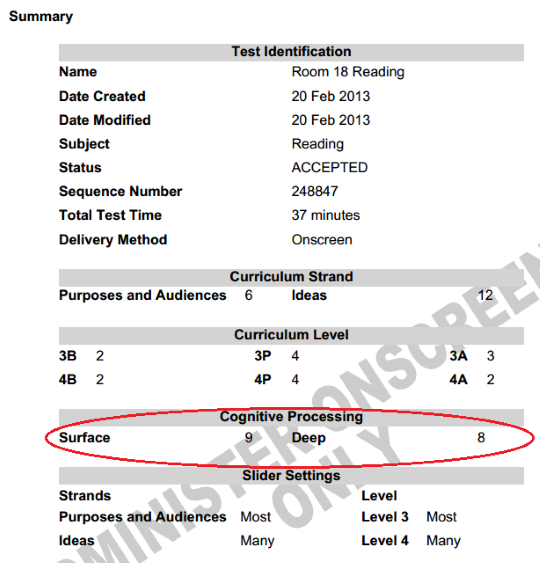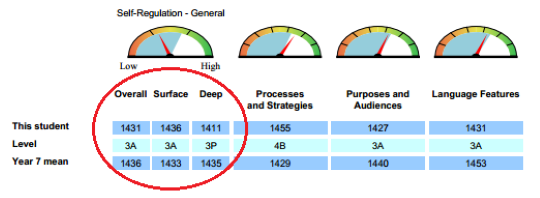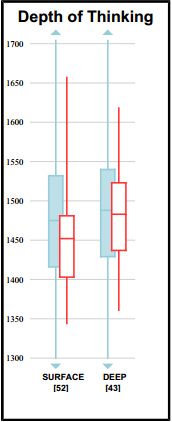Deep and surface - the SOLO taxonomy used in e-asTTle
The deep and surface scores which are used in e-asTTle Reading, Maths, Panui, and Pangarau are based on the SOLO taxonomy. SOLO stands for "Structure of observed learning outcomes".
The taxonomy has five levels to describe the quality of student responses. In e-asTTle, prestructural was removed and the remaining four levels have been grouped into two levels – surface and deep.
Summary of the taxonomy in e-asTTle
- Unistructural – one aspect of a task is picked up or understood serially, and there is no relationship of facts or ideas.
- Multistructural – two or more aspects of a task are picked up or understood serially, but are not interrelated.
- Relational – several aspects are integrated so that the whole has a coherent structure and meaning.
- Extended Abstract – that coherent whole is generalised to a higher level of abstraction.
Each question in e-asTTle has been assigned a level from the SOLO taxonomy. This has then been further classified into either deep or surface.
There are examples in the table.
| Question | SOLO classification | e-asTTle classification |
|---|---|---|
| Whose house did Goldilocks go into? | Unistructural | Surface |
| What are three aspects about the way the bears live that tell us that the story is not a real-life situation? | Multistructural | Surface |
| Goldilocks eats the baby bear’s food, breaks his chair, and sleeps in his bed. What does this tell us about the kind of person she is? | Relational | Deep |
| Why do nursery tales allow wild animals to act in a human fashion? | Extended Abstract | Deep |
Looking at the surface/deep ratio in a test
When you create a test, you can see the number of questions that are surface or deep on the Test Summary. This is listed under the Cognitive Processing heading.

Reporting on surface/deep
You can look at students’ surface/depth scores in three ways.
On the Individual Learning Pathway

On the "Console" and "Console-Comparisons" reports

On the Tabular report, under the Surface Score/Level and Deep Score/Level columns
- Related information


